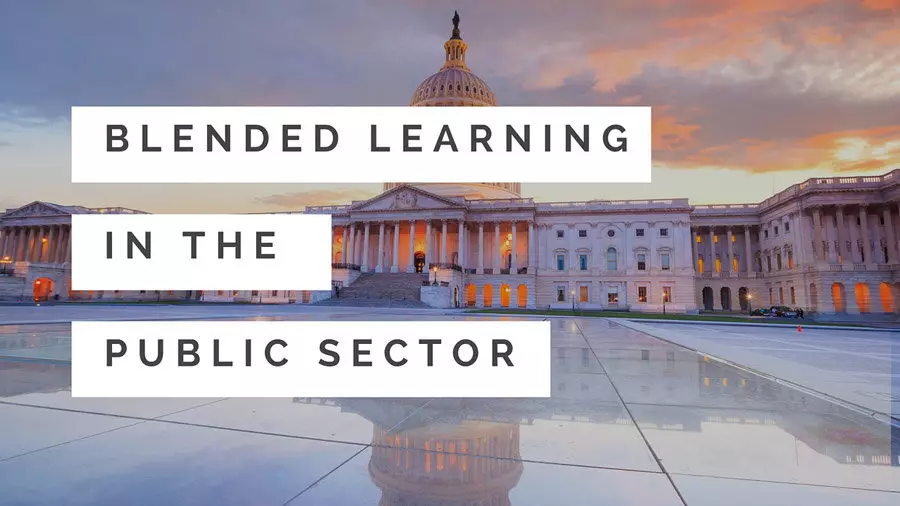Blended Learning Takes Root in the Public Sector

The Federal Government has been making a concerted effort to do better by its public sector workforce. After years of pay freezes and furloughs forced by sequestration’s automatic reductions, morale among federal employees has taken a deep hit. The 2015 Federal Government budget represented, among other things, an attempt to turn the situation around and focus on attracting and retaining better talent.

A big part of that effort is putting more dollars back into training budgets, and a pretty good chunk of that will wind up funding blended learning or bLearning as many now call it – a blend of face-to-face and eLearning.
Perhaps the biggest learning point for the federal government is to be more circumspect in deciding which training modality to use, which should be dependent on a thorough analysis of the people who will take the training courses.
If you’re dealing with novice learners who need to be introduced to new concepts, face-to-face instruction is probably the way to go. But if you’re dealing with more advanced learners to extend and grow their conceptual knowledge as well as their capacity to synthesize learning, then eLearning and blended learning may be the more effective route.
There’s also something to be said for what’s motivating the learner to participate. There’s a big difference between learners who have to take a training because it’s required and learners who volunteer for a course because they genuinely want to learn the content. The has-to-be-there versus wants-to-be-there characteristic needs to inform how the learning is evaluated. In the former, you may not be doing much more than checking for completion of requirements whereas in the latter your assessment will be much more detailed and far-reaching, perhaps following up six months down the road to see what information has been retained and determine if it has resulted in changes to how the learner does things on the job.
Where blended learning can really shine is in those cases where developing far-transfer skills is the goal, such as leadership training. Near-transfer skills in learning means that the application of what’s learned is applied in uniform situations – procedural tasks that are done the same way over and over while far-transfer skills means the knowledge is being applied in situations that are constantly changing. In leadership training, learners might use face-to-face time with fellow learners to role-play situations and then use online forums for more detailed reflections and discussions about the experience.
The problem with too many federal agencies is that they send employees to something called “supervisory training,” which sounds like a good idea, but all too often it is little more than teaching the procedural aspects of supervision – how to write job descriptions, how to use the various management systems and tools, and so on. Conspicuously absent from this mix are all the so-called “soft skills” that ought to be front in center. And these are concepts that do well in the blended learning environment.
That the federal government is a bit slow to get on board with blended learning is perhaps not surprising, but it seems the time has come for it to gain a much stronger foothold. The Department of Energy has a whole position paper making the case for blended learning in its training programs where it’s an appropriate choice – and that came out back in 2010. It gave the following three reasons for using blended learning:
- Increased interaction and positive learning experience. With a blended approach, learning is a continual process not just a one-time event. It appeals to various styles of learning which make a positive experience. Employees benefit from learning because they are working to solve “real” organizational problems while developing new knowledge and skills. With blended learning, employees look for opportunities to grow and develop while contributing to the success of the organization.
- Increased transfer and retention of knowledge. Employees can immediately apply the knowledge and skills they acquire because it’s done on the job and in a structured environment. Applying learned knowledge and skills adds to retention.
- Blended learning optimizes organizational resources. Organizations can utilize learning management systems technology for integrating resources into a single site which streamlines informal learning. Less time is spent keeping multiple sites updated and recreating procedures that are already in place in another organization.
If the federal government believes in the DOE’s case for blended learning, it ought to be spreading it more rapidly throughout its training and learning efforts.
Other articles on blended learning: